Editor's note: The 2020 NCAA Tournament was canceled on March 12. These results and projections were based on expected completion of conference tournaments and are updated through every team's last remaining game.
The Bilas Index is the greatest recognition and measure of basketball prowess and accomplishment known to man. It is compiled for your enjoyment and further education, intended for good and not simply to win your office pool to make thousands of dollars (or more). Remember, this is not a business, it is about education and the welfare of the student-athlete. That is why we will travel these athletes thousands of miles outside of their natural regions and finish some games after midnight, because we believe in education.
The Bilas Index should serve as the standard to the selection committee, and prove conclusively that the committee's work on at-large selections should be finished by now. An example ... Northern Iowa lost in the Missouri Valley Conference tournament. As such, the Panthers are right on the cut line and have NO CHANCE of being selected as an at-large team. Why? Because bigger conference teams have conference tournament games this week that will provide more high-value wins for their résumés.
If the committee can pick the best 36 teams after the automatic qualifiers are factored in, the committee can select the best 68 teams before the automatic qualifiers are factored in. Then, Champ Week is about ONLY that ... championships. At-large selections are based upon the regular season only, and conference tourneys are about the automatic bid only. Pretty easy stuff. More emphasis on the regular season, and a more level field for the "little guy." Each automatic bid that is won would knock out an at-large selection. It would be quite fun, and then the NCAA would have TWO fantastic days ... when the at-large list comes out, and when the bracket comes out. You're welcome.
With that in mind, here is the Bilas Index, pre-tournament edition:

The Jayhawks are the only team in America ranked in the top 10 in both adjusted offensive and defensive efficiency. While that is not dispositive of the best team, KU has only three losses (all to teams in the top 20), with only one coming after December. In a season of wild upsets, nobody could pull anything wild on Kansas. The Jayhawks continue to lean on Big 12 Player of the Year Udoka Azubuike and Wooden Award finalist Devon Dotson -- perhaps the country's best inside-outside combo. As strategies go, this one ain't bad. Just look at the Jayhawks' 16 straight wins.
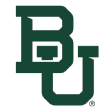
2. Baylor Bears
The Bears have a national championship defense but do not shoot it with Final Four consistency -- and picked a bad time for a mini-skid that included losses to Kansas, TCU and West Virginia over the past five games. But a team like Scott Drew's group that can turn the tempo down and score at will be a problem in the NCAA tournament. Their quartet of guards, led by Jared Butler and MaCio Teague, places Baylor firmly in the 1-seed conversation. The Bears can win it, or be out in the second round against a hot team.

Mark Few has the best offensive team in the country, and the Zags can fill it up from multiple spots. No team can go to as many players to get a bucket. But Gonzaga is not a great defensive team, and really good offenses can put up points against the Zags. With the WCC tournament in the books, Filip Petrusev, Corey Kispert, Ryan Woolridge and crew will benefit from the rest as they cruise to a likely No. 1 seed on Selection Sunday.

Obi Toppin is The Bilastrator's National Player of the Year, but Dayton is more than Toppin. This is a close-knit group that checks every box for talent and ability. All are stars in their roles, and the keys are Trey Landers, Ryan Mikesell and Rodney Chatman. Dayton is ridiculously good on the offensive end, and defends well enough to win against anybody. Can Dayton be beaten early? Yes, but it will take a great effort. The only thing standing in Dayton's way is rebounding and physicality in a given game. Both of the Flyers' losses came in overtime, including against Kansas, The Bilastrator's top team. They're really good. Final Four good.
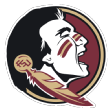
ACC Coach of the Year Leonard Hamilton and his Seminoles, who won their first ACC regular-season title, are 14-3 since New Year's Day, including two drubbings of No. 15 Louisville. Their calling card? Staunch defense. They're top 20 in the nation in turnovers forced (more than 16.5 per game) and have crept into the top 10 in blocks. When the Seminoles are aggressive on the defensive end and playing with controlled abandon, Florida State is beyond formidable. But when playing a tempo-control team, Florida State can be handled. Turnovers and spotty offensive execution can put the Seminoles out before the Elite Eight. FSU's pair of ball-hawking second-team All-ACC guards Devin Vassell and Trent Forrest will dictate just how far it can go.

This is not your younger brother's Duke team. It lost to both Clemson and Wake Forest. But it also played short-handed at times. Freshman Wendell Moore Jr. -- who scored 25 points in a double-overtime loss to Wake -- is back, and reserve guard Justin Robinson, son of Hall of Famer David Robinson, is contributing off the bench. The Blue Devils now have some depth around Vernon Carey Jr. and Tre Jones. Watch out.

Hardly a shock, but look who grabbed a share of yet another Big Ten title. Michigan State was counted out several times during the season, yet the Spartans are playing their best ball at the most important time. Three-time all-Big Ten guard Cassius Winston led the way, averaging 18.6 points and 5.9 assists, and Big Ten Defensive Player of the Year Xavier Tillman Sr. was tabbed with shutting down the other elite forwards in the Big Ten. But the keys might be Aaron Henry and Rocket Watts, both of whom have been productive load-carriers over the past month. If that continues, Michigan State can reach Atlanta.
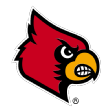
With a back-loaded schedule, the Cardinals fell down a few times, especially against good defensive teams such as Florida State and Virginia on the road. Still, the Cardinals are legit challengers as long as Jordan Nwora is playing at a star level. When he is engaged and active as a star, Louisville is very, very good. The Cardinals still have Elite Eight-type talent.
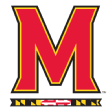
The Terps closed with a very tough schedule yet were able to grab a share of the Big Ten title along with Michigan State and Wisconsin. The only issues facing Maryland are shooting consistency and depth. No injuries or foul difficulties? Maryland wins. No shots going in? That will not work. If Maryland can find some consistency with the 3 ball (the Terps finished the regular season 287th nationally in 3-point percentage), it's capable of big wins.

Utah State's win over the Aztecs was just what San Diego State needed. Now the Aztecs can stay in the West and play as a No. 2 seed. Everybody wins. This is still the best San Diego State team since Kawhi Leonard led the Aztecs to the Sweet 16 in 2010-11. Can this team go further than that one? The metrics say yes. SDSU is top 15 in both offensive and defensive efficiency and, while the Mountain West isn't the ACC, its strength of record is fifth in the country.

Recovering from a disastrous January, Ohio State has cemented its case for a high seed thanks to 3-point shooting and slow pace. Led by Duane Washington Jr. and brothers Kaleb Wesson and Andre Wesson, the Buckeyes have averaged 40% from beyond the arc in their 21 wins, while forcing other teams to play their slow-possession style. Add it all up, and you have a stout team on offense and defense.
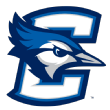
The "Birds of Trey" can all shoot the stuffing out of the ball, and all can score. The only thing keeping Creighton from a title favorite spot is its play on the defensive end of the floor. Ty-Shon Alexander is a great defender, but Creighton is not a great defensive team nor a great rebounding team. The truth is, the Bluejays need to "outscore" you and shoot the ball really well to beat the best teams. But the truth also is, this team can score on anyone. Creighton made 14 3s against Seton Hall on Saturday, including five by guard Marcus Zegarowski, who is now doubtful for the Big East tournament because of a knee injury. It will need him healthy to fulfill its potential in March.
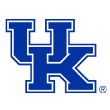
This is simple ... if Ashton Hagans plays, Kentucky can win four games and reach Atlanta. If not, the Wildcats could be out before the Sweet 16. Kentucky is not in the national top 20 in either offensive or defensive efficiency, yet the Wildcats find ways to win. The biggest question is whether Hagans, the SEC's leader in assists per game, will be back after leaving the team for personal reasons. Elsewhere, Immanuel Quickley, the 2019-20 SEC Player of the Year who notched double-digit points in 20 straight games to close out the regular season, Nick Richards and Tyrese Maxey have scored almost 60% of Kentucky's points this season.

14. BYU Cougars
Since Yoeli Childs returned from his nine-game suspension for having the audacity to go on job interviews before his senior season, the Cougars have been stellar. Childs is one of the best big men in the country, and Jake Toolson is one of the best shot-making guards and scorers. TJ Haws finds the open man as well as any point guard, and BYU is in constant motion and hard to guard. BYU is the best 3-point shooting team in the country. BYU is built for March.

The Pirates have it all, with size, experience, perimeter scoring, swagger, and a star in Myles Powell. Seton Hall has won only five of its past 10 but still has the personnel to advance to Atlanta. When 6-foot-11 Sandro Mamukelashvili returned in late January -- he's averaging 12.7 points and 7.0 rebounds in those 11 games --- Seton Hall added another dimension. But in the regular-season finale loss to Creighton, Mamukelashvili scored seven points. They'll need more from him alongside Powell, who is perhaps the country's best guard.

The Wildcats' small-ball approach is working; in their past two wins, against Seton Hall and Georgetown, they've combined for 23 3s. Their defense, which is outside the top 30, needs improvement. But March is about guard play, and junior Collin Gillespie is one of the best. Villanova has no seniors in its rotation -- and only one on its roster -- but Jay Wright's young bunch is coming together at the right time, winning seven of eight games heading into the Big East tournament.

What a season for the Badgers. After starting 5-5, Big Ten Coach of the Year Greg Gard's squad rebounded to become the first Big Ten regular-season champ to not have a first- or second-team all-Big Ten player. Can Wisconsin win away from home, though? After going 15-1 in Madison and 6-9 elsewhere, the Badgers need to get ready for the neutral sites of the conference and NCAA tournament or else they'll be returning home earlier than they want.

First-year coach Juwan Howard navigated the Wolverines through the most difficult strength of schedule in the country, rewarded for it with a likely mid-bracket seed. PG Zavier Simpson led the country in assists, and freshman Franz Wagner finished strong with 15.9 points per game over his past seven. However, Michigan had the worst interior defense in the Big Ten, surrendering 0.88 points per possession and a 44.2 FG% in the paint, both conference worsts.

19. Oregon Ducks
The Ducks show up in big games: They were 4-2 against ranked opponents, the two losses by a combined five points against Gonzaga and North Carolina ... in November. But losses to Washington State and Oregon State are glaring. Watch for Pac-12 Player of the Year Payton Pritchard to make a splash; he was just the third major-conference player to average 20 PPG, 5 APG and put up a true shooting percentage above 60% this century.

20. Houston Cougars
Twelve points stand between Kelvin Sampson's Cougars and a 28-3 record, as their past five losses have come by an average of 2.4 points, making Houston one of the unluckiest teams in the country. Expect the Cougars to keep their games close.

21. Butler Bulldogs
The Bulldogs don't do anything especially well; they're in the top 30 in offense and top 40 in defense, but they do have Kamar Baldwin. Butler's leading scorer finished with a career-high 36 points including a near-buzzer-beating 3 in a one-point win over Xavier in the regular-season finale. It wasn't the first time he saved his squad this season. They'll need more heroics in March.
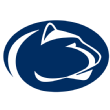
A month ago, the Nittany Lions were looking like a No. 2 or No. 3 seed with Big Ten title hopes. Now? Penn State limped to the finish line of the season with five losses in its past six games, including laying an egg against 8-22 Northwestern in the regular-season finale. Best-case scenario is a couple of wins in the Big Ten tourney and perhaps a No. 6 seed.

23. West Virginia Mountaineers
The Mountaineers bounced back to a 20-win season after a dismal 2018-19. Pay no attention to that 2-7 record since Feb. 8; two losses were to Baylor and Kansas, and West Virginia has the 25th-toughest schedule in the NCAA. Bob Huggins' WVU has also made the Sweet 16 or better in five of nine appearances. The Mountaineers absolutely smother the offensive glass, leading the NCAA in offensive rebounding percentage, and they're top-eight in both adjusted defensive efficiency and effective field goal percentage. That's how you March.

The Fighting Illini get 57% of their points from 2-pointers, a testament to their strong midrange and inside game. Center Kofi Cockburn notched Big Ten Freshman of the Year honors, averaging 13.3 points and 8.8 rebounds. Illinois is one of the best rebounding teams in the country, top 30 on offensive rebounding rate, but have had trouble when facing other strong rebounding teams.

At the end of January, Ed Cooley's Friars sat 11-10 with virtually no shot at the tourney. Now? Behind a surge from grad transfer guard Luwane Pipkins, they've won their past five games against ranked opponents and are rolling into the Big East tournament. Don't underestimate Cooley and the Friars.

It should be no surprise that Tony Bennett's reigning champions lead the country in adjusted defensive efficiency, which allowed the Hoos to rack up some impressive victories (Louisville, Duke) late in the season. They still need to find a reliable scoring option behind Mamadi Diakite (13.7 PPG). In their last five games (all wins) of the regular season, the Cavaliers averaged just 54 points.
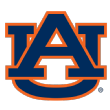
27. Auburn Tigers
Last season's SEC tourney champs looked as if they were back in high gear in a season-ending rout of Tennessee, where top scorer Samir Doughty drilled eight 3s and coach Bruce Pearl said the Tigers played as well as they're capable of. This team might not quite have the horsepower of last year's Final Four squad, but it's certainly looking like a dangerous draw.

28. Iowa Hawkeyes
Iowa is a team boasting a top-10 offensive efficiency and Big Ten Player of the Year Luka Garza. Try to stop Garza, and the Hawkeyes can distribute the ball well, shown by their top-10 assist total and top-five assist rate. However, Iowa struggled down the stretch, losing three of four to end the regular season, a swoon that will have consequences on its seeding.
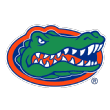
29. Florida Gators
Florida finished second in the SEC in 3-point percentage, bolstered by sniper Noah Locke's 43.2% mark. Kerry Blackshear Jr., the All-ACC Virginia Tech graduate who declared for the NBA draft then withdrew Gainesville-bound, earned second-team All-SEC laurels, and Keyontae Johnson's draft stock spiked after his first-team nod. Florida was as high as No. 6 in the preseason polls but has been wildly inconsistent, and Blackshear is questionable for the SEC tournament. Depending on the direction of the breeze, the Gators could wind up anywhere.
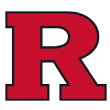
Before anything else, give it up for head coach Steve Pikiell for turning one of the worst programs in the country into an NCAA tournament team. This is a team that will go as far as its top-10 defense and strong rebounding will take it. The real mystery is how much can the Scarlet Knights score, given their awful free throw and 3-point shooting, forcing them to lean heavily on junior guard Geo Baker.

The Buffaloes are a tourney lock but fell off a cliff as the regular season wound down with four straight losses against some of the cellar-dwellers of the conference. When guard McKinley Wright IV gets it going, though, Colorado still shows flashes of the team that knocked off Dayton and Oregon earlier in the season.

32. Indiana Hoosiers
Led by freshman Trayce Jackson-Davis and his 13.6 points per game, the Hoosiers have weathered the grueling Big Ten schedule and appear to be on the bubble. Their NCAA tournament fate will be in their own hands, and a win or two in the Big Ten tournament would help. In losses, Indiana has had stretches where it went ice cold from the field, and will need to turn that around.
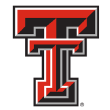
Tech could use a strong showing in the Big 12 tournament for momentum heading into the Dance. The Red Raiders play strong defense -- they're ninth in adjusted defensive efficiency and top 20 in turnover percentage -- but lost five of seven to close the regular season, despite leading the Big 12 in 3-point percentage and assists per game. Big 12 Freshman of the Year Jahmi'us Ramsey (15 PPG, 42.6 3P%) has looked both transcendent and timorous, at times. If Ramsey and the eagle-eyed Davide Moretti can get hot at the same time, the Red Raiders can surprise.

34. Oklahoma Sooners
In an up-and-down 19-12 season, things are trending up for the Sooners, who've ripped off a 3-1 closing run that includes wins over solid Texas Tech and West Virginia teams. Guard Austin Reaves just lit up TCU for 41 points in a crucial OU win, and can score with anybody in the Big 12.

35. LSU Tigers
After a blistering 8-0 start to SEC play, the Tigers stumbled through February and March, giving up 99 points to both Arkansas and Vanderbilt. While their defense can sometimes go missing, they've consistently had one of the best offenses in the country -- with all five of their starters averaging double digits in points.
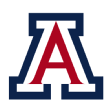
36. Arizona Wildcats
The Wildcats started 10-3 nonconference, only to go 10-8 in the Pac-12 -- but they've also been unlucky. If two one-point overtime losses to Oregon 44 days apart bounce the other way, Sean Miller's squad is higher here. But Arizona isn't without firepower. A trio of freshman luminaries Nico Mannion, Josh Green and Zeke Nnaji -- boasting 16.3 PPG and 8.6 RPG as the Pac-12 Freshman of the Year -- are projected first-round draft picks in June.

Mick Cronin has gone West, but the Bearcats still play their physical style under John Brannen. They're not quite as imposing. In their previous two seasons under Cronin, they finished fourth and second, respectively, in offensive rebounding percentage. This season, they're 55th. Senior Jarron Cumberland (15.5 PPG) remains a force, and Cincinnati will be prepared for a fight in March after playing four straight overtime games in February to win a share of the American title and extend its NCAA hopes.
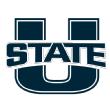
Your Mountain West champions catapulted from bubble obscurity to tourney lock with a positively Sisyphean effort from senior guard Sam Merrill, who played all 40 minutes, scored 27 points and grabbed six rebounds and a much-deserved MVP trophy in defeating a legit San Diego State team.

Markus Howard, the nation's leading scorer, is putting up points -- he has scored 30 or more in his past five games -- but it's not translating to wins for the Golden Eagles, who lost four of those five and six of seven overall. Those struggles are in large part due to a defense that doesn't force turnovers. Marquette is 345th out of 353 Division I teams in turnover percentage.

40. USC Trojans
USC, top 20 in both adjusted defensive efficiency and defensive effective field goal percentage, relies heavily on freshman star Onyeka Okongwu, who averages 16.2 PPG, 8.6 RPG and almost 3 blocks. But senior guard Jonah Mathews, who just became USC's all-time leader in 3-pointers, imbues the Trojans with grit. Whether you'll get the USC that lost by 32 to Washington in January or the one that took Oregon to two overtimes less than two weeks later is anyone's guess, though.

The Shockers don't have a single scorer who'll go off, with five players between 9 and 11.5 PPG, and probably need a good run in the American tournament to lock up an at-large bid. Senior center Jaime Echenique is a steady force, leading Wichita State in scoring, rebounding and blocks.

The West Coast Conference looks likely to see three teams in the field on Selection Sunday, especially after the Gaels' strong performance in the conference tournament -- knocking off a solid BYU team in a gritty, defensive affair Tuesday before falling to Gonzaga.

The Musketeers have had an up-and-down season. After starting their Big East slate at 2-6, they won six of eight before dropping their final two. They don't have a great formula for March -- they're outside the top 100 in offensive efficiency and shoot under 70% from the free throw line. But The Bilastrator still likes Naji Marshall (16.9 PPG, 6.2 RPG), Tyrique Jones (13.7, 11.2) and Xavier's top-20 defense.

44. Richmond Spiders
The Spiders are entirely straddling the bubble at this point, and junior guard Blake Francis (17.7 PPG) makes them a tough out if they get in. Richmond never quite got over the hump against an elite team (Wisconsin is probably its best W), but winning nine out of 10 to close out the regular season is a good sign.

Another 20-win season for Bobby Hurley has the Sun Devils in position for their third straight tournament berth. Arizona State plays fast (it's among the top 30 in pace) and relies on 6-foot guard Remy Martin, who averages 19.1 PPG. Martin showed the level to which he can push his team, hitting 18 3s during a seven-game winning streak in February. The Sun Devils, if they're going well, are a capable of making a run.
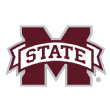
46. Mississippi State Bulldogs
After losing their first three conference games to Alabama, LSU and Missouri in less than a week, the Bulldogs went 11-5 to close out the regular season -- largely thanks to SEC Co-Player of the Year Reggie Perry, one of two qualified players in a major conference to average 17 PPG and 10 RPG this season. Mississippi State crashes the offensive glass hard, ranking fourth in the NCAA in offensive rebounding percentage. With Perry, Robert Woodard II and Abdul Ado all averaging at least six rebounds and a block per game, Mississippi State looks scary in an elimination game.

Purdue slides in with a top-15 defense but a 16-15 record after the regular season that could place them on the outside looking in. The Boilermakers will need wins in the Big Ten tournament just to have a chance at an at-large bid. The middling offense is what holds them back, with their 68.7% free throw shooting, and seeing 9.7% of their shots being blocked, both fourth worst in the Big Ten.

48. East Tennessee State Buccaneers
Expect a decent seed for these Buccaneers, who had a shot at entering the tourney field even without romping through the Southern Conference tournament. They hung tough with Kansas in Maui early in the season, got a big win on the road over LSU and are on a 12-game win streak behind a well-rounded and experienced roster.
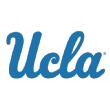
49. UCLA Bruins
The Bruins are alive and well despite wobbling to a 10-10 start to the season. Pac-12 Coach of the Year Mick Cronin has his team at 19-12 heading into Champ Week, with core players Chris Smith and Tyger Campbell clicking. If the Bruins get in, they could trash some brackets as a double-digit tourney seed.

50. Texas Longhorns
Texas is a team of streaks, featuring separate three-game and four-game losing streaks and two five-game win streaks. The Longhorns currently sit outside the top 65 in BPI, at the very edge of tournament consideration. While Texas needs some Big 12 tournament wins, it turns the ball over too much (20.5%), and is the fourth-worst team in the nation at getting to the free throw line.

A 20-point win over Wake Forest in the regular-season finale salvaged a .500 record in the ACC and kept NCAA tournament hopes alive for the Wolfpack, who had lost four of six entering the game. Guards Markell Johnson and C.J. Bryce are what make this team go, but the defense (outside the country's top 80) and rebounding (they're among the worst at keeping teams off the offensive glass) will be stumbling blocks in March.

From Jan. 15 to Feb. 15, Stanford went 2-8, including tough losses to Cal, Oregon State and Utah. But the duo of All Pac-12 guards, first-teamer Oscar da Silva and the All Pac-12 freshman selection Tyrell Terry, combine for 31 PPG. The Cardinal play suffocating D to boot, top 30 in adjusted defensive efficiency, defensive effective field goal percentage and turnover percentage. If Stanford can recapture the magical form that upended then-No. 11 Oregon in early February, it can play spoiler.
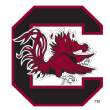
The 2017 Final Four darlings will have work to do in the SEC tournament if they're to be called on Selection Sunday, but the Gamecocks' strong defense (Frank Martin's team is top 50 in defensive efficiency) makes that a distinct possibility.
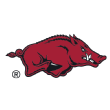
A 12-1 start to the season feels very much in the rearview mirror with coach Eric Musselman's team. The Razorbacks have talent but might need to tack on three or four wins in the SEC tournament to snag a bid.

55. Memphis Tigers
Memphis entered this season with a world of hype, before NCAA drama cost top recruit James Wiseman his season. The Tigers have picked up late-season wins over Houston and Wichita State, and boast a top-10 defense. The offense has its struggles, but Memphis is second in the conference at points in the paint (32.7) and lead the conference in points off putbacks, a credit to forward Precious Achiuwa.

56. UConn Huskies
Second-year coach Dan Hurley, noted program-builder, has the Huskies on a five-game winning streak entering the AAC tournament. Senior Christian Vital, the team's top scorer, also leads the conference in steals and free throw percentage. Freshman James Bouknight (13.0 PPG) has shown flashes of brilliance for UConn, which lost eight games by six points or fewer -- including four in overtime. Despite losing two starters to injury, the Huskies are starting to break through at the right time.
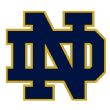
Remember, this isn't the mid-2010s when Notre Dame made two straight Elite Eights. This Fighting Irish squad eked out 19 wins against the 64th-hardest schedule in Division I. To their credit though, they don't turn the ball over (third in turnover percentage) and their defensive free throw rate is the best in the country. Senior John Mooney, first team All-ACC (16.5 PPG, 12.8 RPG), did yeoman's work on the way to breaking the ACC single-season record for double-doubles. But if the Fighting Irish are going anywhere in an ACC tournament they probably have to win, they've got to play their brand of smart, calculating basketball -- and continue to drain 3s (9.7 per game, the 17th most in Division I) the way they have.

A 21-point drubbing at the hands of Drake (less than a week after beating the Bulldogs by 27) in the Missouri Valley tourney will hang heavy over the Panthers in the eyes of the committee -- a shame, given Northern Iowa's nonconference wins over Colorado and South Carolina.

59. Bradley Braves
Braves guard Darrell Brown was a little grumpy about not being a first-team MVC pick and it showed last week. Coach Brian Wardle egged on his top scorer through the conference tournament by calling him "second team" all week, which helped fuel Brown (21 points) and fourth-seeded Bradley to its second straight MVC title with a win over Valparaiso.

60. Stephen F. Austin Lumberjacks
Stephen F. Austin emerged from the regular season with a 28-3 record and a stunning road win at Duke. Expect some chaotic play, as the Jacks are the best at forcing turnovers and the fifth worst at coughing up the ball.
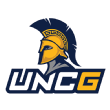
After winning 11 of 12, the Spartans closed the season with three straight losses -- the last two of which came against Chattanooga. They were bounced from the Southern Conference tournament in the quarterfinals, making it tough on themselves heading into Selection Sunday. UNCG did win at Georgetown and Vermont, and with 6-foot guard Isaiah Miller leading the way can make some noise if they shock the world and get in.

62. Belmont Bruins
The OVC champs aren't to be trifled with. After longtime head coach Rick Byrd retired, Casey Alexander took Belmont's reins -- where he played and was previously an assistant for 16 years -- and led the Bruins to the NCAA tournament in his first season. What's more? Belmont hasn't lost since late January, it owns the 10th-best effective field goal percentage in Division I basketball and it rarely turns the ball over. If you're looking for a Cinderella, the Bruins aren't too shabby.
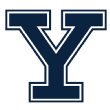
63. Yale Bulldogs
The Ivy League tourney could have come down to Harvard and Yale, had it not been scrapped amid concerns over the coronavirus -- the Crimson had the Bulldogs' number, winning both previous matchups. Now in the field, Yale forward Paul Atkinson is an ultra-reliable double-double threat, and junior forward Azar Swain is a top-50 3-point shooter. Keep an eye out for the Yalies' matchup on Selection Sunday.

64. Liberty Flames
What a season so far for the Flames, who blew through the Atlantic Sun tournament and avenged a regular-season loss to Lipscomb in the title game. Liberty plays stifling defense, finishing second in the nation at 53.4 PPG allowed, and relies on senior guard Caleb Homesley (team-best 15.3 PPG and 2.4 APG) to kick-start its offense.

One of the shortest teams in the country, this team relies on its guard crew, led by Jordan Goodwin and Javonte Perkins, who combined for 30.5 points per game. The Billikens will need to win the Atlantic 10 tournament again to make the cut. Their fatal flaw is free throw shooting, making them at a 58% rate and ranking last in the country.

Vermont is led by do-it-all senior forward Anthony Lamb but plays slow and is outside the top 100 in offensive efficiency. However, the Catamounts won 14 of their past 15 games to close the regular season and earned the top seed in the America East tournament. If they get through that and make the Big Dance, it'll be the third time in the past four years.

67. Colgate Raiders
The same Colgate that nearly upset No. 2-seeded Tennessee in last year's NCAA tournament should take the Patriot League title and make the NCAAs for the fourth time: The Raiders, Patriot League tournament hosts, are 15-1 at home this season and their four conference losses were by a combined 11 points. They shoot the lights out from 3, accruing the third-most 3-pointers made in Division I. Four of Colgate's starting five shoot 36% or better from deep. If the twine is tinkling, the Raiders could ruin a whole lot of brackets (and dreams).

68. Winthrop Eagles
Give one of the tourney's biggest underdogs (just sneaking into the top 150 in NET) this much: They can score. The Eagles have averaged more than 80 points, cracking the century mark in four games this season.
